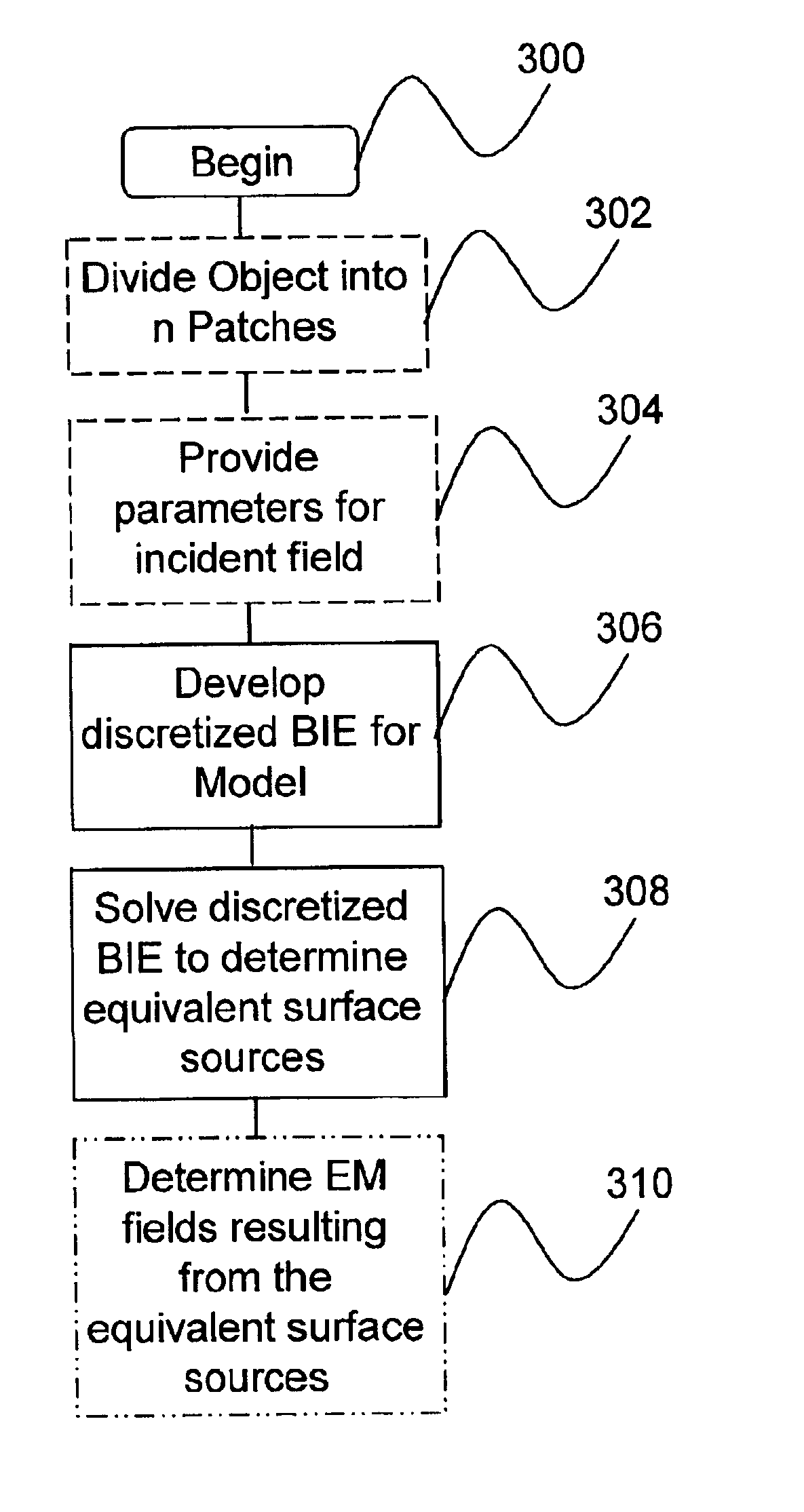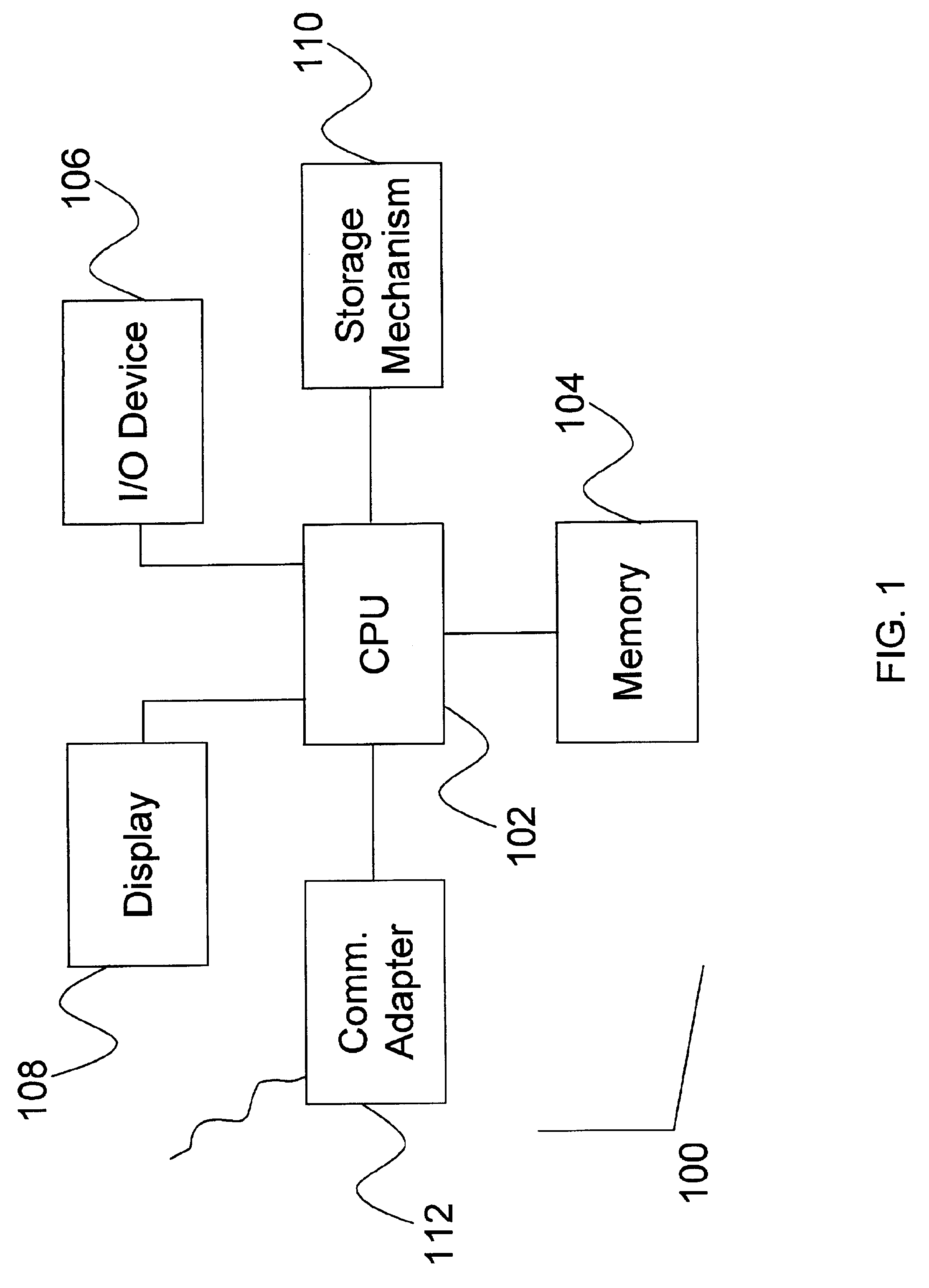Method and apparatus for modeling three-dimensional electromagnetic scattering from arbitrarily shaped three-dimensional objects
a three-dimensional electromagnetic scattering and arbitrarily shaped technology, applied in the field of methods and equipment, can solve the problems of poor scalability of computational resource requirements, poor control of the number of iterations required to obtain an accurate solution, and severely limited practical application of techniques to realistic problems
- Summary
- Abstract
- Description
- Claims
- Application Information
AI Technical Summary
Benefits of technology
Problems solved by technology
Method used
Image
Examples
Embodiment Construction
The present invention provides a computer program product, a method, and an apparatus for generating and solving well-conditioned boundary integral equations for modeling three dimensional electromagnetic scattering of an incident wavefront from an object. It should be understood that this description is not intended to limit the invention. On the contrary, the invention is intended to cover alternatives, modifications and equivalents, which are included in the spirit and scope of the invention as defined by the appended claims. Furthermore, in the following detailed description of the present invention numerous specific details are set forth in order to provide a thorough understanding of the present invention. However, it will be obvious to one of ordinary skill in the art that the present invention may be practiced without the specific details.
Introduction
In the presence of an incident wavefront, the surface properties of an object affect scattering of the wave from the object's ...
PUM
 Login to View More
Login to View More Abstract
Description
Claims
Application Information
 Login to View More
Login to View More - R&D
- Intellectual Property
- Life Sciences
- Materials
- Tech Scout
- Unparalleled Data Quality
- Higher Quality Content
- 60% Fewer Hallucinations
Browse by: Latest US Patents, China's latest patents, Technical Efficacy Thesaurus, Application Domain, Technology Topic, Popular Technical Reports.
© 2025 PatSnap. All rights reserved.Legal|Privacy policy|Modern Slavery Act Transparency Statement|Sitemap|About US| Contact US: help@patsnap.com



